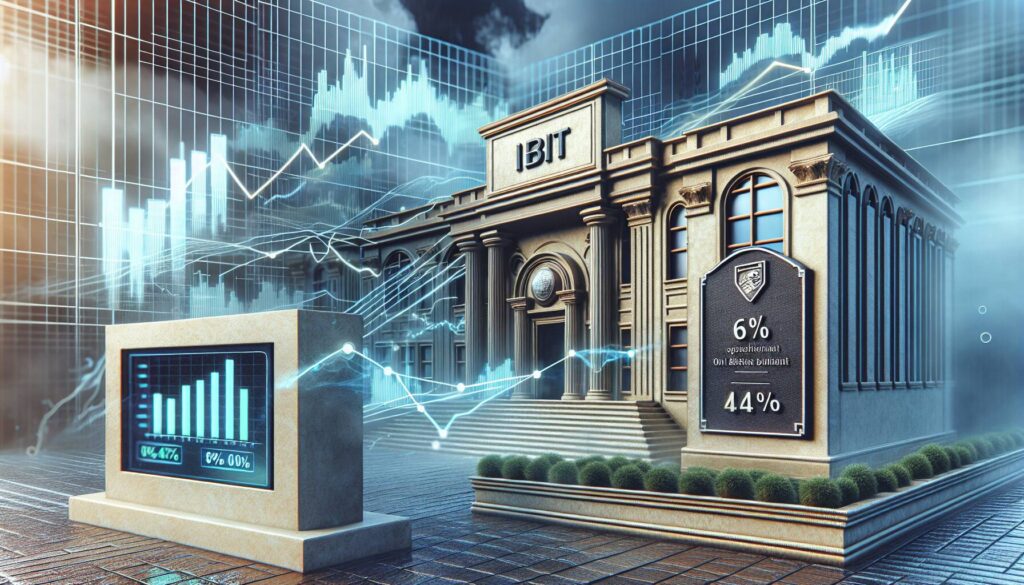In this week’s edition of CoinDesk’s macro column, analyst Omkar Godbole unveils a surprising twist in the world of currency trading: the EUR/USD pair is now challenging the price dynamics of the ever-volatile bitcoin. Over the past month, the euro has gained nearly 4%, dramatically outperforming bitcoin’s modest 2.4% increase. As of June, both assets have seen an impressive year-to-date rise of over 13%, suggesting a shift in market sentiment that could have broader implications.
Experts are speculating that the euro could continue its upward trajectory, particularly as Germany implements a significant fiscal plan aimed at stimulating economic growth. This plan includes an exemption for defense spending from debt restrictions and a substantial investment in infrastructure. While the U.S. dollar has long enjoyed a reputation for stability—boasting a fiscal exceptionalism narrative under the Biden administration—growing concerns about budget deficits and debt levels signal a possible reversal in this trend.
“The initial condition was a huge overweight in USD and assets, but now it looks like portfolio allocation toward European equities,” says Marc Chandler, chief market strategist at Bannockburn Capital Markets.
As market dynamics evolve, the correlation between bond yields and the euro remains a focal point. The European Central Bank’s recent actions, including rate cuts, have surprisingly strengthened the euro against the dollar, which raises questions about the future of U.S. interest rates. While the Fed may consider rate cuts in the near term, the implications for the dollar could be significant.
The need for higher foreign exchange hedge ratios among European investors also adds another layer to this complex narrative. With many European pension funds increasing their hedging activities, the concurrent demand for euros could further push the euro’s value higher against the U.S. dollar. This trend emphasizes the growing sophistication of currency management strategies, as investors seek to navigate the shifting macroeconomic landscape.
As we delve deeper into these developments, it’s evident that the conversations surrounding currency performance are not just about numbers; they encapsulate broader economic narratives that affect a range of assets, including cryptocurrencies. Stay tuned as we continue to explore these intricate connections and their implications for investors around the globe.

EUR/USD Dynamics and Global Market Impact
Key observations from the CoinDesk weekly macro column by Omkar Godbole:
- EUR/USD Performance:
- EUR/USD rose nearly 4% in June, outperforming Bitcoin’s 2.4% gain.
- Year-to-date performance shows both assets up over 13%.
- Germany’s Fiscal Policy:
- Germany’s new fiscal plan includes significant infrastructure investment and increased defense spending.
- Expected positive impact on German GDP, potentially benefiting Eurozone economies.
- Shift in Currency Exceptionalism:
- Shifting focus from U.S. dollar exceptionalism to German economic strength.
- Concerns over U.S. budget deficits impacting the dollar’s attractiveness.
- Interest Rate Outlook:
- Potential widening of the rate differential favoring the euro as U.S. growth may slow.
- The ECB’s completed rate cuts may stabilize the euro’s performance against the dollar.
- FX Hedging Strategies:
- European investors are increasing FX hedge ratios to protect against dollar weakness.
- This hedging trend may lead to increased demand for euros, contributing to its strength.
- Investor Actions:
- Investors may reconsider portfolio allocations influencing currency movements.
- Higher hedge ratios for European investors may create long-term pressure on the USD.
The changes in currency dynamics and investor strategies could have significant implications for global market trends and individual investment decisions.
Comparative Analysis: EUR/USD’s Rise vs. GBP/USD Trends
The recent surge in the EUR/USD pair has certainly captured the attention of market analysts and investors alike, particularly as it showcases a notable shift in the macroeconomic landscape. Surpassing traditional expectations, the performance of EUR/USD at nearly 4% elevates its status, particularly when juxtaposed against well-known counterparts like GBP/USD, which has struggled with its own set of challenges, such as Brexit uncertainties and the UK’s economic recovery woes.
One competitive advantage of the current EUR/USD dynamics is rooted in Germany’s expansive fiscal measures, which may catalyze broader Eurozone growth. This fiscal stimulus stands in contrast to the cautious approach of the Bank of England, which has been more constrained in its monetary policy. As a result, European assets could see a stronger portfolio allocation shift, potentially benefiting funds and investors focused on stable returns in a robust European market.
However, this rise also presents disadvantages for EUR/USD. A potential resistance level around 1.22/1.23 may create headwinds, particularly if the ECB undertakes further rate cuts contrary to the market’s expectations. On the flip side, GBP/USD investors, who have historically relied on the stability of the British economy, may find themselves repositioning their strategies, potentially causing volatility as they react to the implications of shifting capital towards Eurozone assets.
The implications of EUR/USD’s performance extend notably to European pension funds, which account for a significant portion of foreign investments in the U.S. equity market. As these institutions increase their FX hedging ratios in response to dollar weakness, it may create a ripple effect that not only intensifies selling pressure on the USD but also solidifies the euro’s bullish trajectory. Conversely, this could complicate matters for U.S. investors and corporations heavily exposed to currency fluctuations, as a devaluation of the dollar may impact profits and earnings when converted back to euros.
Ultimately, as the landscape evolves, both individual and institutional investors will need to navigate these shifts carefully. Those positioned to capitalize on the anticipated growth in European assets may very well find an advantageous scenario as the dynamics of global currency trading continue to unfold.















